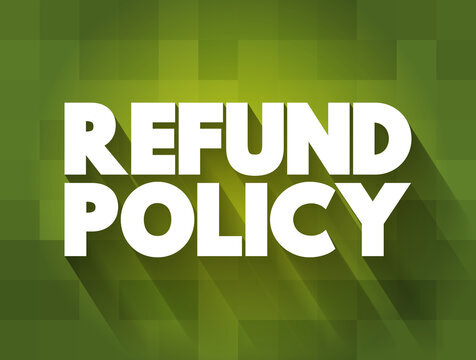A Solid Refund Policy Means Repeat Customers

Nearly everyone reading this has heard of Costco, the wholesale warehouse. They’re known for great deals if you’re okay with buying in bulk and hot wieners with a soft drink for a dollar and a half on your way out. What’s lesser-known is their unsurpassed refund policy. Suppose a member is dissatisfied with a purchase for any reason. In that case, that purchase can be refunded, so long as the receipt accompanies the merchandise, regardless of how much time has elapsed. THAT’S the real value of a Costco membership.
As a new or existing e-commerce retailer, there are several things that you need to pay attention to more often than a physical store would—and establishing a simple, fair, and reliable return policy is one of them. Consumers are exceedingly cautious, especially when shopping online, and are incredibly wary of inconsistencies or policies they are not entirely comfortable with. Having a product return policy that is easy to understand and makes customers comfortable will make it easier for first-time buyers to give your company a chance.
Giving a customer a refund with no questions asked may seem counterintuitive to your company’s bottom line at face value, but as you read on, you’ll begin to understand that it costs more money to make a new customer than it does to keep an existing one.
A typical site review for an e-commerce merchant application includes reviewing the website’s terms and conditions, including the refund policy. Most of the time, the sponsor bank is looking to ensure there is a refund policy explicitly defined, but personally, I’m looking to see what kind of refund policy is published. In my experience, I have seen a broad spectrum of policies ranging from “no refunds” to “refunds upon request” and everything in between. There is never a one-size-fits-all solution to any problem, and each situation must be approached holistically. For example, a sex toy retailer must have a policy against receiving opened products for health and safety concerns. Still, a business that offers memberships to video streaming services has a little more leeway to offer refunds. The sex toy retailer may be able to offer a replacement due to a manufacturer defect, but a refund because the cardholder changed their mind or they were dissatisfied might not work – an alternative solution, like a similar product, or store credit, might be enough to keep the customer happy, and will help build goodwill toward your brand reputation. You never want to make an enemy by mistake.
Working with your customers and ensuring client satisfaction is an excellent way to build word-of-mouth referrals, ensure client retention, and repeat business. It’s not always about throwing money at the problem to make it disappear. Sometimes a customer might have a problem that’s quickly resolved with someone on the phone or over chat. Make sure you have an excellent customer service team that’s courteous, responsive, and empowered to help your customers achieve customer satisfaction.
An additional and significant benefit to a liberal refund policy is that it can help prevent chargebacks from occurring. Suppose a customer is dissatisfied for any reason and isn’t receiving any cooperation from the business where the sale occurred. In that case, the customer will not hesitate to contact their issuing bank to dispute the charge. Unfortunately, the cardholder may not always be truthful in their dispute reasons and will recall Shaggy’s 2000 hit flawlessly: “It wasn’t me,” every time they call their credit card’s fraud department. As a business owner, you may have overwhelming evidence proving that the transaction is legitimate. You may successfully overturn the chargeback – it can be done – but unfortunately, the chargeback fee assessed is not reversible. Depending on the cost of the transaction, the cost of your time compiling evidence and submitting it to your processor, plus the chargeback fee – it’s entirely up to you if it’s something you want to pursue. Some business owners issue a refund to make the cardholder go away, and others go to the mattresses.
It's also worth noting that even if the chargeback is won, the chargeback count remains. If a business tends to run a little hot in the count or ratio, it can be a little spicy each month. RDR can help with that, but it’s more effective when combined with good customer service.
Customer retention isn’t all about giving money away. If you don’t already, you may want to consider a loyalty rewards program. After x-number of months of consecutive memberships or x-dollar amount of purchases, you can offer a promotion of your choosing. Retailers may include a gift, such as lubrication samples, and membership sites may offer a free month of membership. Little perks like these may cost the business next to nothing, but it’s a gesture of appreciation for your clients to let them know that you, as a business owner, appreciate their patronage, and it helps to build goodwill toward your brand and reputation.
Ultimately, how the business is run and how the refund policy is administrated is up to the business owner. No one intentionally works for or wants a bad reputation.
Return to Blog








* Created by
